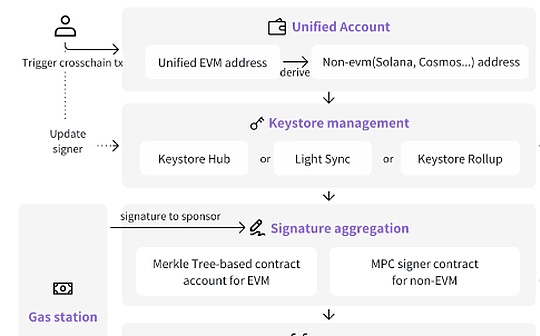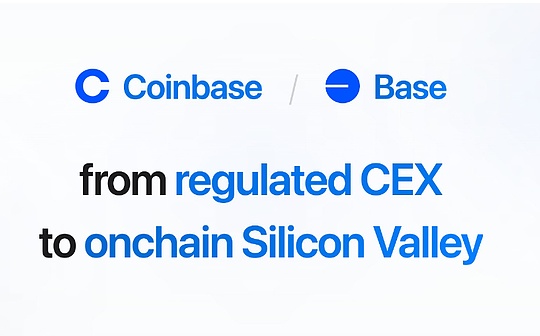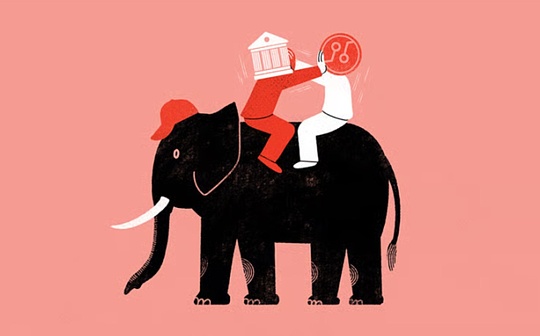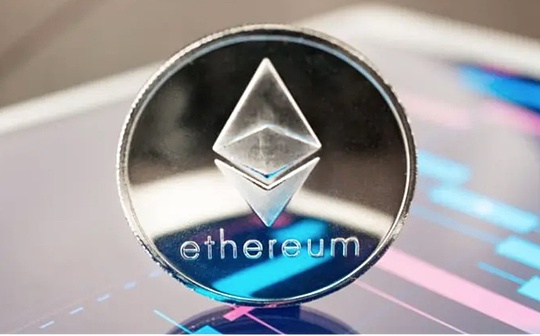
Author: RUI, SEVENX Ventures Investor; Translation: 0xjs@作 作 作 作 作 作
In the Rollup boom, we can only be achieved by simplifying the complexity of infrastructure for users.This means that all cross -chain operations only need one account, one signature and a gas.However, challenges still exist, such as synchronization of account status, signature aggregation, atomic execution, and delayed finality.
1. What is chain abstraction
At the final stage, end users will not need any basic knowledge.They only need to express their intention or designated orders, sign the transaction, and leave the rest of the work (routing, GAS conversion, construction, orders and cross -chain operations) for automatic processing.This article pays special attention to cross -chain abstraction.
2. Why is the abstraction of the chain very important
With the theory of fat agreement, the blockchain Rollup or replace the L1 builder is doubled, and the Rollup-As-A-Service is speeding up the new blockchain to one day.Having said that, those blockchains that lack activities will disappear within 6-18 months.Nevertheless, it seems unlikely to achieve a unified blockchain monopoly due to the continuous demand for flexibility.Even in a more concentrated long -term scenario, the existence of various blockchain will continue to lead to user experience and fragmentation of liquidity.
3. Chain drawing decomposition
Unified address: Wallets merge different EVM and non -EVM addresses into one.
Signature aggregation: Smart contract account (EVM) or MPC signature contract (non -EVM) management signature aggregation.
Status synchronization: Keystore rollup or hub helps to synchronize cross -chain wallet status.
Single Gas: Paymaster contract supports ERC20 payment, and even sponsor all payment.
Block construction harmony: MEMPOOL builder verification, sorting and batch transactions, while RPC monitor each transaction status on each chain and coordinate executed in order.
Unified liquidity: Cross -chain liquidity is processed by solver such as uniswapx or liquidity HUB.

4. Who is the main player
The chain drawing is at the intersection of wallets, intention -based systems, MEV solutions and bridges.
Key projects such asSafe, CLAVE, Flashbot, Layerzero, UnionOthers play active or passive roles.
This year, the goal of a specific chain abstract participant is to integrate various modules into a unified front -end solution, such as
Particle NetworkUse COSMOS SDK to develop a 1 -layer solution, allowing users to use any tokens or parti as GAS transactions across EVM, Solana and BTC.
LightProvide 4337 cross -chain smart contract wallets, support status synchronization and signature aggregation,
Burnt (xion)It is a general chain abstraction protocol with a meta -account design that allows unknown signatures, parameterization cost layers and status machine updates.
Near protocolIntegrate the MPC layer to solve cross -chain transactions.
5. Unified address of multi -chain
The separate account for each chain is a burden for users and developers, and the latter is required to manage multiple code libraries.For smart contract wallet projects, such as
Particle Network and Light can use a certainty deployment agent, which can deploy any chain of the same address in the EVM and use Create2 to deploy any contract at a certain location.For the external blockchain, the address can be obtained from the EVM address, chainid, and the provided path. Each account receives an unlimited number of remote addresses on each chain.For the EOA account, for example, the Near protocol is derived from the NEAMPLE.near, the derived path (such as the Ethereum-1 string), and the MPC service.
6. Synchronization of cross -chain wallet status
When the user changes the signature key on the 2nd floor, how to synchronize to other chains?It requires real -time update, minimum update cost and reasonable dissemination time.The following are the current three solutions: Keystore Rollup, Light Sync and Keystore Hub.
Keystore rollup
In the design of Vitalik Buterin, the smallest KeyStore Rollup is a Rollup -based Rollup, which stores its Merkle tree status on L1.In order to create a wallet, the user creates a ZK circuit to define the logic of verification and update signatures. Each user has a data + verification key (VK).The user creates a SCW to hardly encode its key into an unsusable value.Those who need to change the SCW signature through this L2, users can submit their original keys, new keys, the data values encoded in the current VK, IMT, and proof of verifying the current VK.Alternatively, the user can submit TX directly to the KeyStore contract on L1.
This method is neutral and does not need to be trusted. However, incentives may be challenging. Assuming that the update signature is not frequent behaviors, users must pay the TX proof in advance to subsidize the ROLLUP proof, otherwise it will not provide any value to the proof.
Light state sync
Light realizes light wallet synchronization, which is invented by Agusx1211 from 0xsequence.It enables the wallet to create a custom message mode that is not attached to the network chainid in the SCA, which allows the signing of the “control commission” to sign a new set of signatures, and these signaturers can be used to sign any conventional transactions or messages later.EssenceHowever, the state will not be updated until the user operates any chain. Another transaction can be marked as one of the Baching TXs to update the chain state to match the latest “pre -sign” state.
This method realizes real -time and cost benefits, but it seriously relies on the availability of data under the chain. If the data is lost, the wallet will not be able to access its latest state or even become unavailable. ThereforeEssenceIn addition, this method cannot provide strong guarantees when deleting the signature, because it does not disable any content on the chain.
Keystore hub
Particle Network uses KeyStore Hub.The code logic and storage separation of the intelligent account, the KeyStore Hub storage signature information, the user deploy and update the consistency of the multi -chain state through the HUB deployment and update.In short, the KeyStore center is responsible for sending the updated transaction to different chains.
This method is the most direct method. Assuming that the operation of the signature is not frequent operation, so the batch transaction costs are acceptable, but it needs to trust and delay.
7. Signature aggregation
Users can now use a single signature to initiate multi -chain transactions.Projects, such as Light, use the full -chain signature aggregation based on Merkle Tree to ensure that users only need to sign once.However, when it comes to non -EVM, projects like Near use MPC signature contracts, and the contract will return the elements required to rebuild the signature instead of the TX itself, which allows them to summarize the signature process of multiple blockchain (That is, in Bitcoin, return R and S values) and forward it to the corresponding network.It should be noted that if necessary, the signature of the payer (sponsorship GAS) needs to be collected and aggregated in this process.
8. Gas abstraction
A better experience is that GAS is sponsored by other parties (wallets or DAPP) or paid in ERC20. More importantly, in cross -chain scenes, uniform GAS reduces complexity.GAS includes the execution fee of all related chains.In the process of constructing TX, Paymaster signed a contract with the participants by providing its own signature. When Bunler conducts a chain simulation, the balance of Paymaster will be checked. Paymaster returns the GAS to the Bundler target chain when executing on the Bundler.
Layer1 is similar to Particle Network allows users to pay and process cross -chain GAS with any token or parti;
Light allows the use of any token and custom payer to pay to fully sponsor the GAS of specific order streams;
CLAVE currently sponsor GAS, all “all” user transactions.
9. Block construction
From a higher level, we will have a plug -in memory pool and decentralized block builder to deal with transactions.User preference covers complex sequences from simple transmission from a single domain to crossing multiple blockchains.Users can specify the execution details in the domain or provide abstract instructions, leaving the best routing to the executor.
The concept of Suave depicts an ideal scenario: multiple chains share the centralized sorting layer, maximize the network elasticity and block space income of the verifications, and at the same time ensure the open access of the founder and the search.
10. Reeressor
In order to achieve cross -chain atomicity, relay work is closely related to the construction of the block, monitor the TX execution of each chain through the relay node/such as Flashbots RPC, and coordinate the bundler/builder to send the next TX to the corresponding chain chainEssenceRepeat this process until all transactions are performed on the target chain and handled unused GAS fees.
Theoretically, the waiting time is the outlet time of the blockchain. When the block is too slow, the signature will fail.We can set TX to atomic, so that when a TX fails, the entire TX will fail.
11. Particle Network
Particle builds a modular COSMOS L1 as a general settlement layer, supporting chain abstraction across EVM, BTC, Solana, etc.By using the previous wallet, the service integration and BTC Connect as the entrance, the account storage and synchronization through the keystore contract in the EVM, they use the decentralized bundlers service to build UserOps, message transmission protocols for cross -chain transactions and relativesResponsible for the entire life cycle.With PARTI as the center of the Particle chain, both the GAS on the particle and other chains can be abstracted.On the basic layer, L1 can use the security of Babylon dual pledge and adopt aggregate DA.Particle Chain will become a one -stop solution for end users and DAPP.








